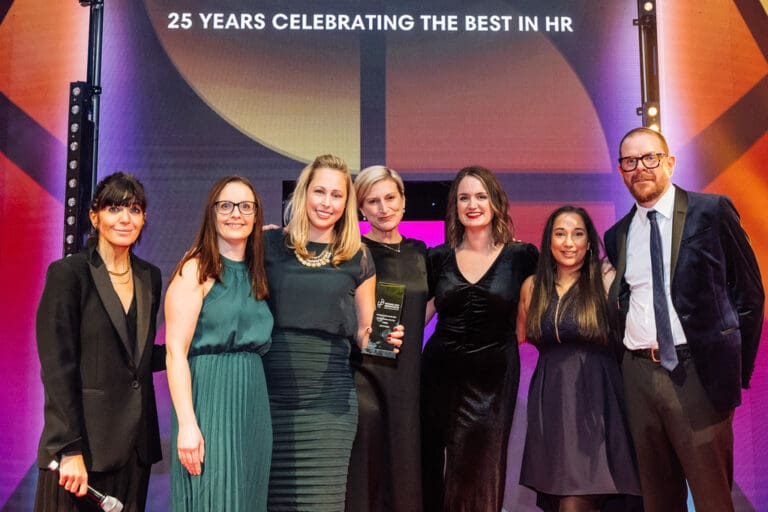Fifteen years ago, as careers websites became the lynchpin of most resourcing strategies, reciprocity was one of the key objectives of any good site.
The definition of reciprocity is an exchange or trade of mutual benefit. In short, what did the candidate get for their click?
The outcome of fifteen years of the careers site is ever more engaging ways of giving value to the candidate to attract their application. That’s been great to see. But why have we not progressed this train of thought into and throughout the candidate experience?
Why spend so much time and money on the shop window, then shatter the illusion with a bumpy and dull experience thereafter?
Take Heineken’s lauded employer brand video – a masterpiece. But have you clicked to apply? You land on the regular ATS with a bump.
Resourcing can do no better than to look at the consumer world for the way forward. Reciprocity is expected.
When I choose a book, I expect to be advised what else I might like. When I order my groceries online, I expect to collect points and be served relevant offers. When I book a holiday, I expect peer reviews and recommendations on where to eat out. And I expect to be able to chat immediately with the retailer – should I need to – to answer my questions.
Yes, there’s a commercial purpose to the added value; the more value-added, the more I’m likely to buy and advocate that brand – but that’s reciprocity right?
Candidates who are satisfied with their experience are twice as likely to become a customer…
So, why does resourcing still believe it’s acceptable to offer anything less than a consumer-grade experience to candidates who take their time to apply for a role? If online retail is competitive, then recruiting can be even more so.
Candidates are ever-more discerning, thanks to low-unemployment figures, skills shortages and their high experiential benchmark set by the fact they are also consumers.
Thankfully, 2017 has seen candidate experience becoming a stated priority for many employers.
Reports such as IBM’s Far-reaching Impact of Candidate Experience, show the commercial imperative of the positive candidate experience, as does Graeme Johnson’sresearch around the cost of poor candidate experience to Virgin Media as being in the £millions.
So will 2018 see organisations invest in candidate engagement? Will 2018 be the year of reciprocity?
I was with a client last month – they’re a B-2-C business. They already measure their candidate experience Net Promoter Score (NPS) – as do an increasing number of companies – but they’re taking this further in 2018. They’re exploring how to measure their Candidate Effort Score (CES); how much effort did the candidate feel they needed to make to complete the task required.
The theory being – as with the consumer world – that effort is linked to experience. The less perceived effort, the more positive the experience.
How about taking it a step further and measuring the Mutual Benefit Score? I’ve just made that measure up to illustrate a point, but imagine if your candidate experience was measured by how much value you had added to the candidate?
80% of candidates said they’d take one job over another based on the connections formed during the recruitment process
Ok, stats time.
Let’s look at the data and test the current status quo. 55% of users spend less than 15 seconds on a careers site, and 40-50 seconds is considered a good length of time.
Whereas the average application process for an emerging talent scheme requires c.20hrs, that’s before the assessment day and the 6-9 month wait post-offer.
Given the time invested by the candidate in the recruitment process, why do we find it acceptable to give so little value back? As well as seeming unfair, it’s also high-risk.
According to research this year by Advorto, 70% of graduates believe that the practice of reneging on job offers is acceptable. And Mattersight found 80% of candidates said they’d take one job over another based on the connections formed during the recruitment process.
With the average cost per hire in the emerging talent space being £3,383 according to the ISE (Institute of Student Employers), that renege rate can be painful both cost and resource-wise.
People who are satisfied with their candidate experiences are 38% more likely to accept a job offer.
Interestingly, of that £3,383, £1,722 was on attraction and marketing and £1,661 on selection & assessment. What budget was allocated to adding value and ensuring candidate engagement? Does this need to become a budget item in its own right?
Not an additional cost necessarily, but a recognised portion of budget allocated to reciprocity in the recruitment journey to ensure reduced renege rates and increased advocacy.
And brand advocacy is an essential consideration.
According to IBM, regardless of whether they get a job offer, applicants who are satisfied with their candidate experience are more than twice as likely to recommend the hiring organisation to others.
People who are satisfied with their candidate experiences are 38% more likely to accept a job offer.
And last, but not least, if securing budget is an issue, it’s worth reminding the Board that candidates who are satisfied with their experience are twice as likely to become a customer of the hiring organisation.
No article would be complete without a quick mention of GDPR. Yes, it’s causing headaches, but is this a chance to re-engage databases, making them genuine talent pools again. Reciprocity will be key if we’re to get your talent pools to opt-in post-May.
Sharing pertinent content, lifting the lid on your organisation, giving candidates a chance to gain from their experience of opting back in will be crucial.
There are some great examples of organisations who take time to add value during the candidate process. We’re working with clients who give feedback to near-misses with the hope they’ll reapply successfully.
Other clients run sessions inviting candidates to meet their business leaders and specialists to gain insight along the way. And prepping candidates for assessment centres, enabling candidates to be their best on the day is also a great value-add. Whether they succeed in your process or not, they’ve gained insight and learning; you’ve enriched their experience.
Using candidate engagement technology such as Meet & Engage means this reciprocity can be high-touch on a volume scale.
So, is 2018 the year that a recruiter’s dashboard measures NPS, CES, and MBS as well as time-to-hire and cost-per-hire? It’s my New Year’s resolution.






